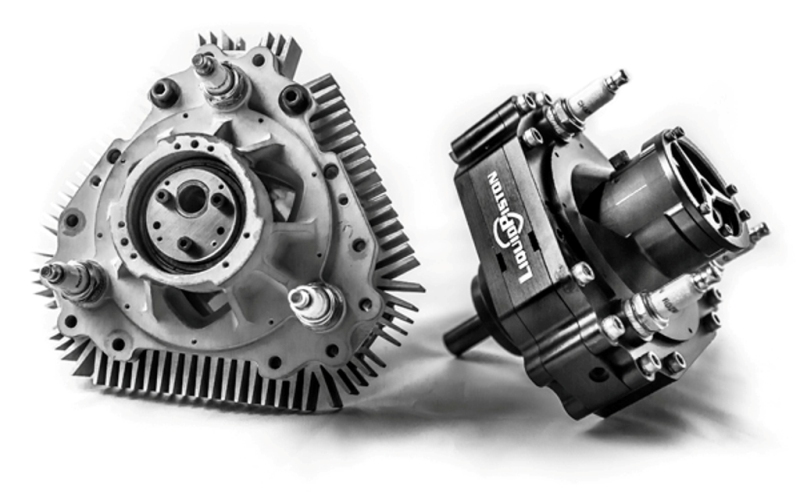Boondawg
Member Posts: 38235
From: Displaced Alaskan
Registered: Jun 2003
|
Total ratings: 342
User Banned
|
|
4 pounds, 70cc (3hp @ 10,000rpm)!  | | | quote | The engine is Liquid Piston’s X-Mini engine, which up until a couple of days ago had only been tested in a laboratory context. The X-Mini engine is a bit similar to a Wankel engine, but sort of reversed: where a wankel has a triangular-ish shaped rotor in a sort of siamesed-circle combustion chamber, the X-mini uses a siamesed-circlular rotor in a triangular-ish engine block.
The X-Mini engine uses a unique cycle, one that has three ‘combustion events’ per rotor revolution, giving the engine a very high power density. Here, this video will help explain things:
Liquid Piston claims the engine is about 20% more fuel-efficient than a conventional combustion engine, and has much less noise and vibration, as well as being significantly smaller and lighter.
The company is targeting lawn equipment initially, but has much larger plans, with a focus on range extenders for electric vehicles.
The installation of the X-mini engine into that go-kart in the video up there marks the engine’s first real-world test, and it looks like it was pretty fun. The engine’s specs are described as:
The X Mini is a gasoline-powered 70 cc engine with a 4-pound core that fits in a 6.6” x 6.2” x 5.4” box, making it 30% smaller and lighter than comparable four-stroke piston engines. The spark-ignited engine only has two moving parts and has shown high power density, producing 3.5 HP (indicated at 10,000 RPM). The engine weighs just four pounds and produces over 5 HP at up to 15,000 RPM.
A four-pound engine that produces 5 HP is pretty impressive; to compare, a 5.5 HP conventional lawnmower engine weighs around 30 lbs.
I asked about how these sorts of engines would scale up, since, you know, I’m always looking for possible engines for cars, and here’s what Liquid Piston told me, along with some information about what they’re looking to do:
The engine architecture is inherently scalable from 1hp to 1000hp. They can scale the engine by increasing the size of the rotor (width / diameter) and also by stacking multiple rotors together (so each rotor balances the other, much like the Mazda rotary design). In a multi-rotor design, each rotor behalves like a 3-cylinder 4-stroke engine. LiquidPiston’s first ‘X’ engine prototype was larger, at 1.2L (up to 220HP), and operated on Diesel in true Compression Ignition mode. The 70cc X-mini is now relatively far advanced in its development, but the initial 1.2L X1 Alpha prototype demonstrates the breadth of the technology.
However, LiquidPiston’s primary long-term goal is for the engine to serve as a range-extension for Electric Vehicles. Consider the auto-maker that can provide an EV that has 30 miles of electric range - sufficient to cover 90% of a user’s daily driving needs. Such a battery pack would be small, light, and cheaper. Our X4 engine (currently a concept) will provide 30kW of power on Diesel fuel, in a package that weighs just 30 pounds, and fits in a 10x8x8" box. If configured as a range extender for the EV, such an engine can be used to power a generator that would charge the EV batteries, extending the range to 300 miles that drivers are accustomed to - while also enabling the driver to refuel at any gas station, much like they do today (no planning through charging way points required).
Not only is this a win-win combination for auto makers and drivers, but perhaps most interestingly - the X4 engine is envisioned to have better fuel economy than a heavy duty diesel truck; as such, charging the battery with Diesel will actually have a lower CO2 footprint, as compared to charging the EV on the U.S. power grid. It is sometimes forgotten that the US power grid actually burns coal and gas to supply a significant amount of energy, and the transmission / distribution network is not very efficient. Generating the power right at the point of consumption can change this.
https://jalopnik.com/tiny-r...o-kart-fo-1781988639
|
|
[This message has been edited by Boondawg (edited 01-27-2019).]


|
02:53 PM
|
|



















